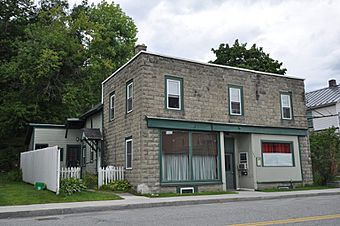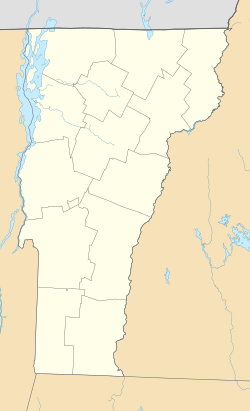Progressive Market facts for kids
|
Progressive Market
|
|
|
U.S. Historic district
Contributing property |
|
 |
|
| Location | 63 S. Main St., Hartford, Vermont |
|---|---|
| Area | less than one acre |
| Built | 1922 |
| Part of | White River Junction Historic District (2002 increase) (ID02001553) |
| NRHP reference No. | 95000814 |
Quick facts for kids Significant dates |
|
| Added to NRHP | July 10, 1995 |
| Designated CP | December 20, 2002 |
The Progressive Market is a really old building in White River Junction, Vermont. It was built in 1922 and used to be a busy neighborhood grocery store. This type of store, where people could walk to get their food, is quite rare now! For many years, families who came from Italy ran the market. They served the local community living near South Main Street. This special building was added to the National Register of Historic Places in 1995. Today, it's no longer a store.
The Story of the Market Building
The old Progressive Market building is found just south of the main shopping area in White River Junction. It sits on the west side of South Main Street.
What Does the Building Look Like?
The building has a few parts. The front section has two stories and is made of rough-looking concrete blocks. There's also a one-story section, or "ell," made of similar blocks. At the very back, there's an older wooden part. The front of the building is close to the sidewalk. It has a single storefront on the first floor. This includes a main entrance set back a bit, with display windows on each side. On the second floor, you can see three windows.
Who Ran the Market?
People started using this spot as a store in 1922. That's when Giachino Romano bought the property, which already had a house on it. Either he or Raffaele and Virginia Guarino built the storefront. The Guarino family ran a meat and grocery store here until 1946. They served the many Italian families living along South Main Street. After them, the Falzarano family took over the store. They kept it running at least into the 1990s. The people who owned the store often lived in the apartments above or behind it.



